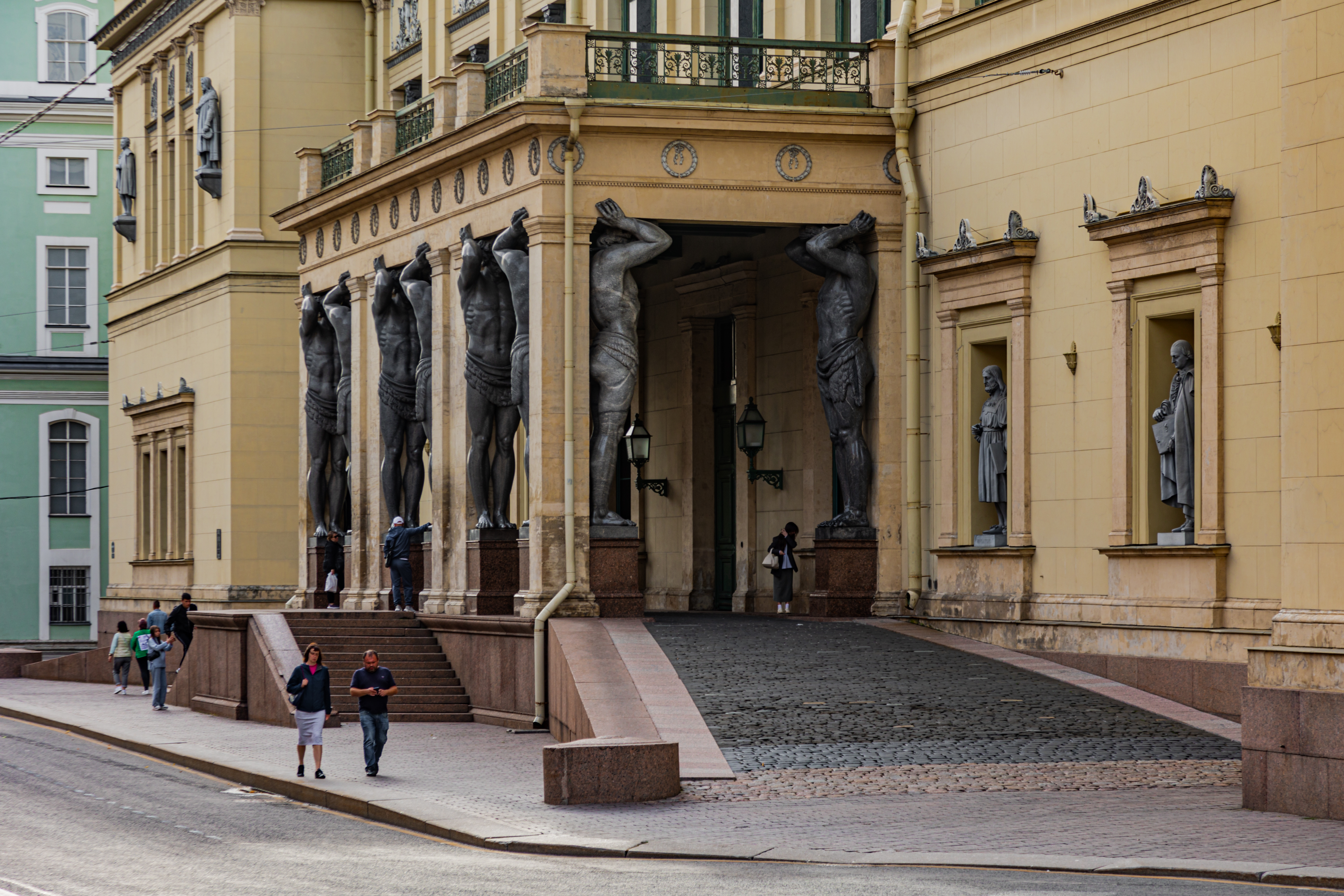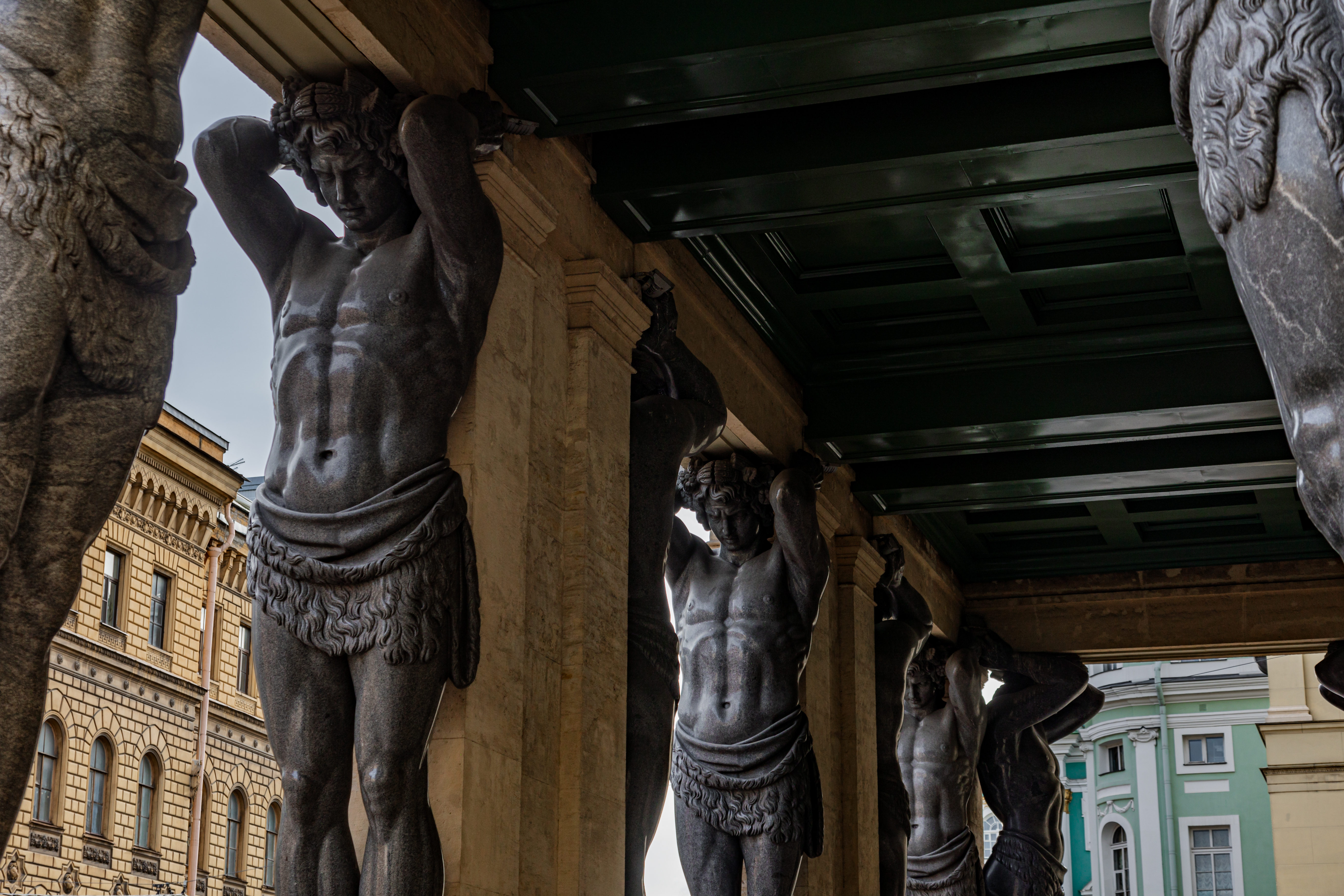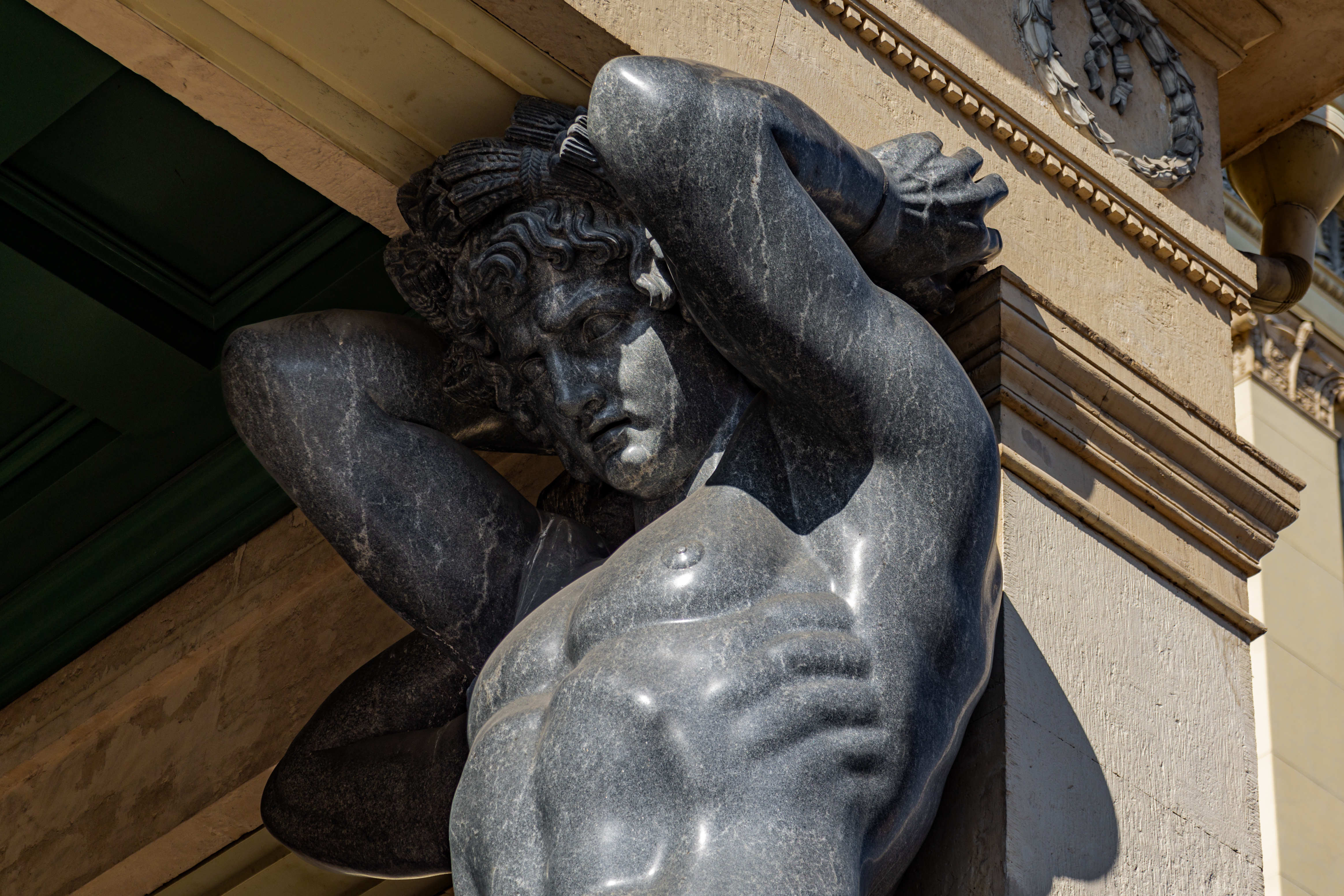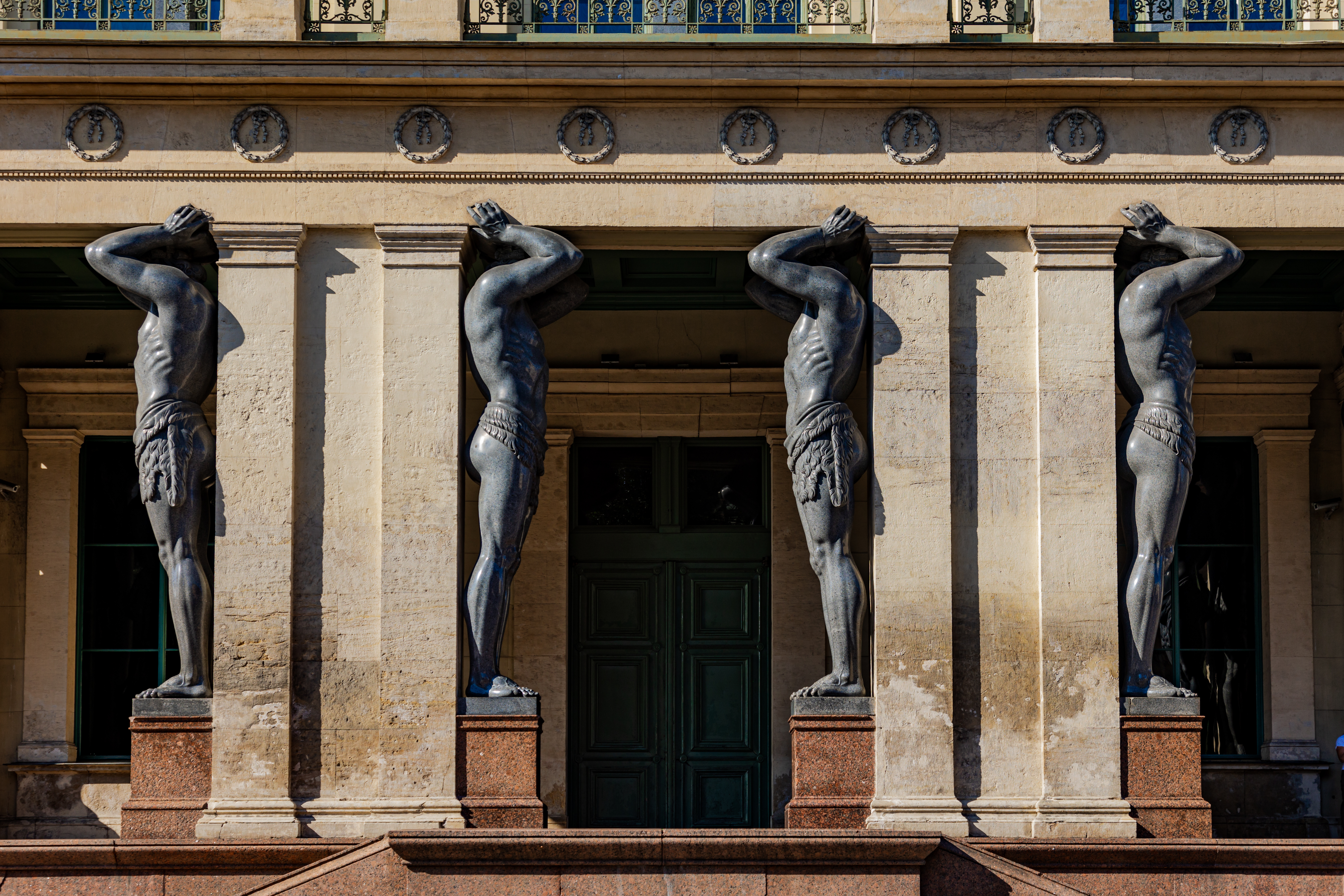 Back
Back
Atlanteans at the Hermitage

Millionnaya ul., 35
According to Ancient Greek mythology, Atlanteans are the Titans called by Zeus to hold the sky
From the history of the New Hermitage and the Atlantean figures
Initially, it was planned to arrange the main façade of the New Hermitage from the side of the Winter Palace. However, already during construction, an order was issued to arrange the main entrance from the side of Millionnaya Street. The finished window openings from the side of the Winter Palace were bricked up, the openings were left to accommodate statues. At the same time, a ceremonial portico was created. Until the 1930s, it was the main entrance to the Hermitage.
Von Klenze proposed to decorate the main entrance to the New Hermitage with ten Atlantean figures, the prototype of which were the figures that were once placed on the facades of the ancient Temple of Zeus in Acragas (Sicily), built in the 5th century BC. Leo von Klenze wanted to make the Atlanteans from red granite. Based on his drawings, the sculptor I. Halbig in Munich even managed to make a small model, which was sent to St. Petersburg. But V. P. Stasov suggested using grey Serdobol granite for the figures, and the sculptor Alexander Ivanovich Terebenev significantly revised the original design in 1846. His version was accepted for execution. Terebenev's main assistant was the stonemason G. A. Balushkin. 150 people were engaged in carving the stone figures. The final finishing of the figures was done by the sculptor himself; he personally worked on their faces. By September 1, 1848, the Atlanteans were ready and installed in their places [3, p. 306]. The work satisfied von Klenze. He noted that "the beauty and noble style of these sculptures, the purity and precision of the work leave nothing to be desired," and also that these Atlanteans "in terms of genuine artistic value of beauty in many ways surpass both the granite monoliths of the colossi of the Egyptian pharaohs... and everything known in the same kind"
[Cit. by: 4, p. 106].
(c) Alexander Chernega
Member of the board of the St. Petersburg Union of Local Historians,
author of the site "Walks around St. Petersburg"




